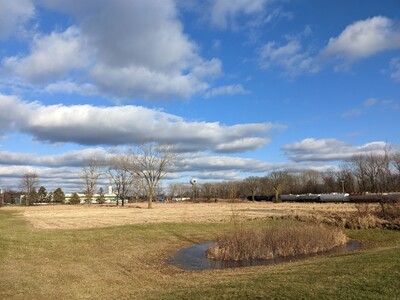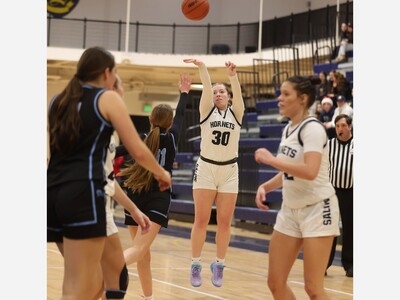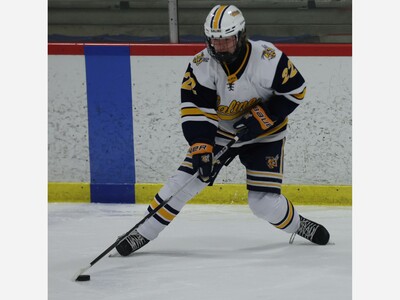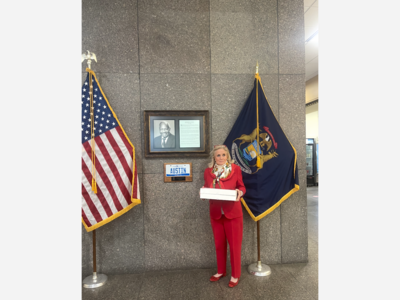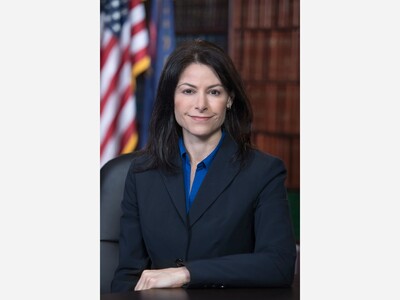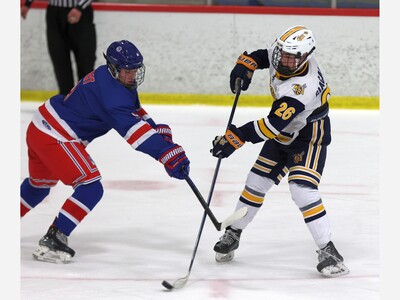District Officials Discuss Athletics Participation Fees
Rising pay-to-play fees haven’t hurt participation in athletics at Saline High School. But with parents willing to pay more, how much is too much?
The annual pay-to-participate fee, which allows students to play up to three varsity sports per schoo year, has increased from $125 in 2008-09 to $325 this year. Iin 2008, there were 630 students playing fall sports. This year, there are 670.
The fees and their impact were a topic of discussion at the Saline Area Schools Board of Education meeting Tuesday and the board’s policy committee meeting Wednesday.
Pay-to-play fees, which rose as the district faced state funding cuts and increased labor costs, and are expected to generate $270,000 this year.
“The concern has been, as fees have gone up significantly over the last several years, how do make sure that we’re not creating a barrier to participation,” said Superintendent Scot Graden, adding that athletics are an extension of the classroom.
Trustee Todd Carter called the stable participation numbers a positive sign.
“Fees do not appear to be impacting participation at the high school, and that’s a good thing,” said Carter.
Participation has declined slightly at the middle school, where annual participation has fallen from 709 to 621 as annual fees have increased from $125 to $275. School officials say the low participation is due somewhat to strong out-of-school athletic programs, such as the Saline Area Soccer Association.
The discussion about fees went two ways. Pay-to-pay fees for sports like basketball, volleyball, baseball and soccer are beginning to catch up with fees paid by parents of the students who play the so-called club sports, like field hockey, lacrosse, water polo and hockey. Some see that as fair. Others wonder about the idea of charging fees for public school athletics, and how far down that road the district should go.
“It’s getting to the level where basically everyone is paying the same,” said Carter, whose daughter plays field hockey at a cost of $375 per season.
The cost gap between club sports and varsity sports is narrowing, but depending on the sport, the pay-to-play still represents a bargain. Sports like hockey, for instance, remain far more expensive.
Kids playing the “varsity” sports pay $150 in the fall, and then play winter and spring varsity sports at no extra cost. Similar discounts do not exist for “club sports,” as Trustee David Zimmer pointed out.
“If your kids played in crew and did lacrosse, they could be paying somewhere near $1,500,” Zimmer said.
Trustee David Holden said these are issues which need to be addressed.
“My own feeling is that pay-to-play is a hidden tax on the parent,” Holden said.
Holden suggested the district be more active in reviewing programs to determine whether or not they be bumped to varsity status. Existing policy says district administration can review programs to determine if club status should be upgraded to varsity status. That report is then shared with school board, which can grant the team varsity status. Factors for achieving varsity status include two years of successful operation as a club sport, adequate student interest, nearby competition and compliance with MHSAA and Saline Area Schools rules and regulations.
It hasn’t happened, however, since the swim and dive programs were granted varsity status.
Trustee Chuck Lesch said he’d like to see the Athletic Department conduct periodic reviews and recommend changes to the board.
Holden didn’t disagree, but said the board needed to be active on the issue.
“As board members, we’re voices for the parents and student athletes,” Holden said.
Holden said it’s easy to imagine the cost for club sports and varsity sports continuing to rise as long as parents continue to be willing to pay higher prices.
“This is the public schools. When I go back to my Dearborn days, we didn’t pay to be in sports,” Holden said. “We didn’t pay for intramural sports. (In Saline), we’ve taken intramural sports, put them in Community Education and we’re charging kids $80 to play basketball on Saturday mornings,” Holden said.
Any savings parents might achieve on sports fees, however, would have to be made up somewhere else in the district if the programs are still offered.
For now, the district’s policy committee is recommending existing policy be changed so that the board approves pay-to-play fees in March, rather than in June, when the annual district budget is approved. Another change to the policy adds other school club and activity fees to the policy.
The policy committee will take another look at the club sport status and a policy to deal with requests from student groups for fee exemptions when it meets next month.
A larger discussion on the role of school athletics could be looming.
“The landscape is changing. I wonder if we should have a large community discussion on these issues, whether it’s club sports vs. varsity sports or taking sports off the books altogether,” Holden said. “We should put a committee together and get valued input from the community.”
The athletic department does offer a scholarship which allows some students to participate at reduced costs.
Here are the participation numbers.
| SHS | 2012-13 | 2011-12 | 2010-11 | 2009-10 | 2008-09 |
| Enrollment | NA | 1693 | 1678 | 1742 | 1674 |
| Fee | $325 | $250 | $175 | $150 | $125 |
| Fall | 670 | 639 | 685 | 660 | 630 |
| Winter | NA | 242 | 228 | 232 | 229 |
| Spring | NA | 584 | 556 | 579 | 584 |
| Total | NA | 1465 | 1469 | 1471 | 1443 |
| SMS | 2012-13 | 2011-12 | 2010-11 | 2009-10 | 2008-09 |
| Enrollment | NA | 752 | 793 | 762 | 805 |
| Fee | $275 | $250 | $175 | $150 | $125 |
| Fall | 252 | 250 | 260 | 272 | 284 |
| Winter | 237 | 241 | 207 | 229 | |
| Spring | 134 | 134 | 162 | 196 | |
| Total | 621 | 635 | 641 | 709 |
More News from Saline
- PRESS RELEASE: Saline High School’s Trent Trout Named Michigan ACTE 2026 Teacher of the Year Manufacturing instructor Trent Trout named MI ACTE Teacher of the Year.
- PRESS RELEASE: Saline Area Schools Superintendent Receives High Marks During Evaluation Superintendent, Dr. Rachel Kowalski, earned the highest rating during her annual evaluation from the Saline Area Schools Board of Education at the December 9 meeting.





